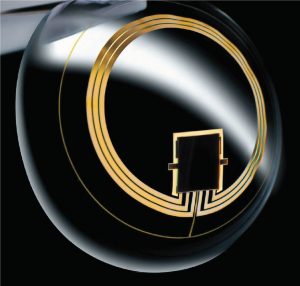June 1, 2018, Dr Chee L Khoo

Source: SENSIMED
We are all familiar with 24-hour BP monitor. We are also familiar with 24-hour Holter monitor and continuous glucose monitoring. We now have 24-hour intraocular pressure monitor. It doesn’t actually monitor intraocular pressure but the effects of it (a bit later). A recent study has now confirmed the association between the intraocular pressure monitoring and progression of glaucoma in older adults. This will revolutionise the management and monitoring of glaucoma.
Glaucoma management is pretty much based on a single intraocular pressure (IOP) measurement taken during office hours over many consultations. It can miss peak pressure in 60% of the time. I guess it is pretty much similar to our management of patients with high BP readings in our rooms.
We can now perform a 24 hour estimation of the pressure by utilising a contact lens sensor (CLS) that records the changes in ocular shape in response to the underlying IOP. The inbuilt sensor in the contact lens captures the circumferential changes at the corneoscleral limbus which occur with IOP and volume changes. The signals are received wirelessly by the adhesive antenna placed around the eye and transmitted to a portable recorder.
A CLS signals provide a “signature” that can differentiate between patients experiencing fast vs slow visual field progression of glaucoma. This signature has a better correlation with glaucoma progression rates than regular tonometry measures taken few times a year over many years. Data from a large multicentre consortium of patients have recently been analysed and it has validated that association.
The Triggerfish Consortium compiled data from 50 centres in 13 countries in which CLS recording was performed in a total of 1355 eyes; 445 eyes of 445 patients were evaluated. The collected data from field tests performed a few years prior to the CLS monitoring. The pattern detected by the CLS was associated with prior rates of visual field progression.
The CLS system measures how the ocular structure responds to pressure. It is thought that the response reflects the susceptibility to glaucomatous damage and progression. In other words, the stiffer the eye structures are, the more the structures must have been damaged by prior glaucoma. Future studies with prospective collection of visual field tests after CLS recording ought to be performed to evaluate its performance to possibly recognize the patients at highest risk of visual field progression. If confirmed, these findings could have clinical application on risk stratification in glaucoma. Exciting times ahead.
Access the abstract here.
Reference:
Carlos Gustavo De Moraes, MD, MPH; Kaweh Mansouri, MD, MPH; Jeffrey Liebmann, MD; et al. Association Between 24-Hour Intraocular Pressure Monitored With Contact Lens Sensor and Visual Field Progression in Older Adults With Glaucoma. JAMA Ophthalmol. Published online May 24, 2018
